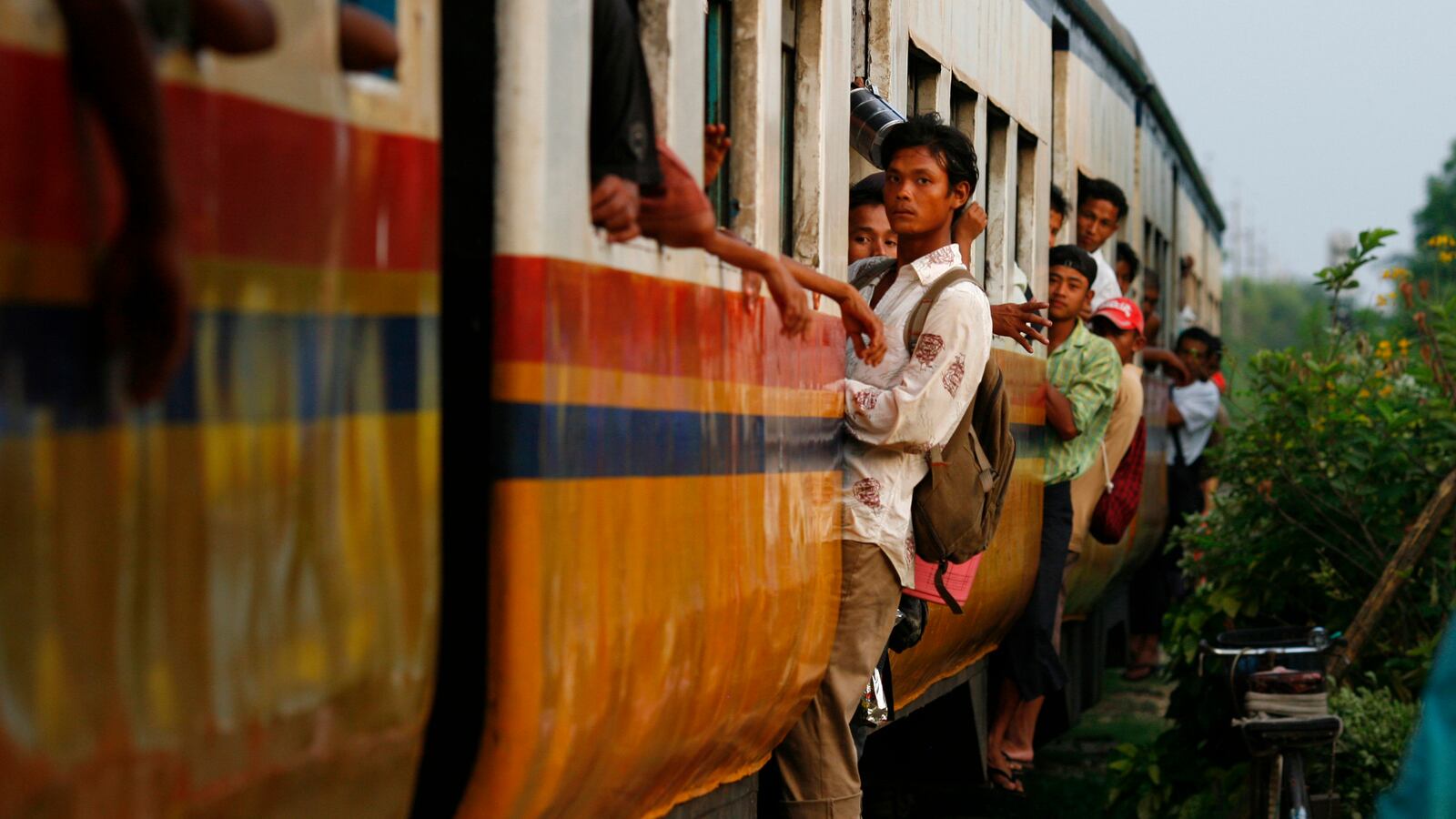“There’s a military checkpoint ahead,” my guide said. “Lie down on the floor, and we’ll cover you with a tarpaulin until we get past.”

It was 1983, and I was updating Lonely Planet’s Burma guide. Since visitors could only get a visa for seven days, it was going to be a non-stop race around the country, although at that time the list of places you could visit was distinctly limited. Things were changing. For one thing, I’d been able to rent a Hilux, the Toyota pickup truck which would later become known as the Taliban’s wheels-of-choice. Having my own transport would make my trip much easier. I could avoid the never-ending trips on the local buses and trains and the flights on Union of Burma Airways, a trip that could easily end very quickly. In 15 years, the tiny airline managed to crash 10 aircraft.
Of course, like so much else in Burma at the time, renting a car was semi-illegal, so my driver had to fuel up for the entire week-long trip before we left Rangoon. He didn’t have permits to buy fuel outside the capital, so I huddled beneath the tarp alongside a collection of five gallon containers of gas. We were entering Prome and, like my semi-illegal rent-a-truck, visiting this riverside town was also probably semi-illegal, although we were pretty certain that once we’d passed the checkpoints at the town edge everything would be OK. It was part of what made travelling around countries like Burma and writing guidebooks about them so much fun.
My final leg back to Rangoon involved an all-night drive from Inle Lake to Pegu, and then a short drive back into Rangoon after I’d checked out that interesting little town. By then, however, I was dead on my feet. There’d been too many overnight drives and, while my truck crew could catch up on sleep during the day, I had hotels, restaurants, and all those other guidebook essentials to check out. There was no chance of sleeping on the rough and ready roads of early ‘80s Burma.
“Take the train to Pegu,” suggested my crew. “You can get some sleep, we’ll drive through the night and pick you up in Pegu.”
“Great idea,” I responded. “Except the overnight train doesn’t stop in Pegu, it goes straight through and on to Rangoon.”
“No problem,” my resourceful crew announced, “the train goes through the station very slowly, so you can jump off.”
They were right. The next morning we crawled slowly through the station, I jumped down to the platform, and my sleeper compartment companions tossed my bag down to me.
I flat out loved writing guidebooks. Even in the “ordinary” destinations it was always interesting, and many of our guidebooks, like Burma, required a writer willing to go “to the end of the road.” Lots of our writers were willing to do just that. In 2006, I was at a party in Paris with our French language partners. Jean-Bernard Carillet, a French writer whom I had worked with on a guide to French Polynesia, turned up and came over to me excitedly: “I’m just back from Africa, I got into Somalia!” OK, it was Somaliland, the “safer” bit of Somalia, but it was clearly a thrill that there was another corner of Africa where a Lonely Planet writer had at least set foot. I often used Africa as a useful measure of how intrepid our writers could be. We repeatedly warned them that we didn’t want them going anywhere dangerous, and yet, with every new edition, there were never more than a handful of countries from the 50-odd that make up Africa where nobody had been.
The following year, I read with delight a long email from Frances Linzee Gordon, one of our more intrepid female writers. (In fact the most intrepid writers often were women.) Frances had just spent two months travelling around Saudi Arabia updating our guide. I’d travelled around the country and been amazed by how easy it had been. But I was a man, able to rent cars, turn up in any restaurant, and use internet cafes. I certainly didn’t need to traipse around hidden under a black tent at the heels of a “responsible male relative.” Frances had insisted that she could update Saudi Arabia, she got the gig, she did the job, and I was incredibly impressed.
That was what made Lonely Planet so much fun—working with people who loved travel and were more than ready to go all the way to the end of the road and then some. I don’t think travel guides are going to disappear; we’ll need as much information, we’ll read as many words as we ever have, and if that information comes in pixels on a screen rather than ink on a page, well big deal. In fact, Lonely Planet used social media from day one. It’s just that, back then, the postings really did come by post.
Burma is now Myanmar, Rangoon is Yangon, Prome is Pyay and Pegu is Bago. Travel there today is a lot more reliable and comfortable, nobody has to hide in the back of trucks.






